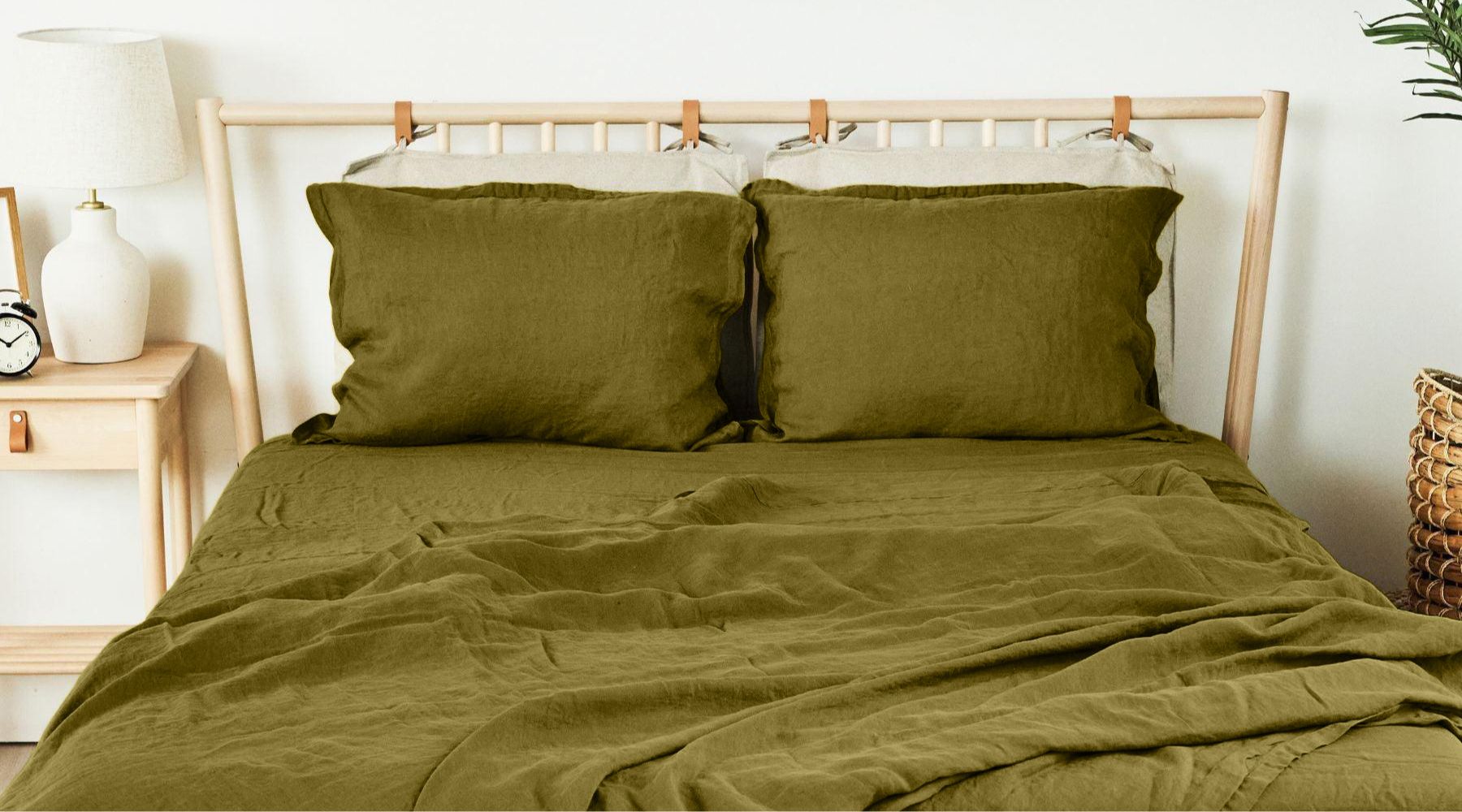Article: Winter-Proof Your Linen: Care Tips for Cold-Weather Comfort

Winter-Proof Your Linen: Care Tips for Cold-Weather Comfort
Discover how to care for your linen through the colder months: learn the best winter washing practices, how to keep it soft and breathable, and why there's no need to pack it away when temperatures drop.
Is Linen Bedding Good for Winter?
The short answer is—yes, absolutely! Linen is typically thought of as a summer fabric, and for good reason. Flax linen is part of a family of fibers known as bast fibers, which includes jute and hemp. Bast fibers are made from the strong inner bast of the stem, which supports the plant. It also transports nutrients and, as a result, has thousands of tiny pores along its length. Thanks to careful harvesting and handling processes, these pores are preserved in the finished linen fabric, making linen perfect for summer, as hot air and moisture escape through these natural vents.
But the same properties that make linen a great summer fabric also make it perfect for winter. Linen reacts to ambient temperature; when it’s cool, the same pores that allow hot air to escape will instead trap it next to the body, creating an insulating layer while still allowing moisture through. This property—of keeping you cool in summer and warm in winter—is known as thermoregulation.
Our soft linen bedding makes a perfect gift for the holiday season, keeping you and your loved ones warm all winter. Choose from solid-color sets or our beautiful, printed designs, inspired by flora and fauna natural to Scandinavia.
Winter Washing Practices
You don’t need to vastly change the way you wash your bedding in winter, but you might want to take extra care with certain parts of the process, as you’ll be drying indoors more (see below for our indoor drying tips).
As in summer, you can wash linen bedding at a low temperature—30°C or a cold/cool wash is more than sufficient. Avoid fabric softeners; our soft linen bedding doesn’t need them, and they may deposit residue that blocks the linen pores, interfering with its natural thermoregulating properties. Our organic linen duvet covers only need to be washed every 2 to 4 weeks; during winter, washes can be at the less frequent end of this range as you’ll be sweating less. Use a mild, eco-friendly detergent such as Ecos, Molly’s Suds, Seventh Generation Free & Clear, or The Laundress Signature Detergent.
Since drying indoors tends to be slower than outdoor drying, use a fast spin cycle to help the process along. Be aware that this will leave more wrinkles in the linen—fortunately, with our rustic linen bedding, the wrinkles are part of the charm! If you prefer the ironed look, iron on the reverse side while the linen is still slightly damp for best results.
Air-Drying Linen Bedding in Winter
Natural air-drying is the best way to care for any fabric, not just linen. It’s cheaper and more sustainable, as it doesn’t use electricity; it causes less damage and shrinkage to fabrics (though durable linen bedding is less susceptible to this than delicate wool or silk); and there’ll be fewer wrinkles.
In winter this becomes more difficult: it’s too cold to hang laundry outdoors, so indoor drying becomes your only option. This tends to take longer, as there’s no wind or sun and moisture tends to build up in the air.
There are, however, ways to speed up the process to enable natural indoor air-drying. There’s no real consensus on what style of drying rack is best—but as a rule, look for something that spaces out laundry as much as possible, allowing air to circulate. When hanging laundry, hang it as flat (i.e. not bunched up) and far apart as possible; avoid stacking items on top of one another. If your heating is on anyway, place your drying rack near the heater. Avoid putting any laundry on top of the heater, as this will block the airflow and make walls damp.
To avoid moisture buildup in the air and to help dry your bedding faster, consider investing in a dehumidifier; some dehumidifiers have a special “laundry” mode for this purpose. This has the bonus of preventing damp in your home.
Tips for the Dryer
Of course, sometimes you just need your European bedding to dry in a hurry—for example, if you’ve only got one set and will need it that night, or you’re preparing for guests. It’s totally fine to use a dryer for our European linen bedding; for best results, use a low, gentle setting and remove your sheets from the dryer while still slightly damp, air-drying at the final stage, to decrease wrinkles.
Hygge Hazards: How to Remove Stains and Candle Wax From Bedding
As the nights draw in, you’ll likely be spending more time in bed with your hygge companions: a great book, hot coffee, and lots of candles on the nightstand. But what if—disaster!—you spill coffee or candle wax on your linen bedding?
With coffee, time is of the essence. If you catch the stain immediately, just blot (don’t scrub) with a wet microfiber cloth to get it out. If the stain is dried in, make a mix of powdered laundry detergent, cold water, and white vinegar, apply it to both sides of the stain, and leave it for five minutes. Then, gently rub it with a soft brush in a circular motion, rinse with cold water, and launder your bedding as normal.
With candle wax, it’s the opposite—wait for it to dry and it’ll be easier to remove. One the wax has dried, scrape off as much as you can with a blunt object such as a credit card. For the remaining wax, you’ll need to “sandwich” the stain between two paper towels, then apply heat with a hairdryer—the wax will melt into the paper towels.
If, however, the above tips haven’t worked, it might be time to see a professional cleaner.
Professional Cleaning
While our durable linen bedding doesn’t require dry cleaning, it is possible to take it to a professional. Just make sure to use a company that specializes in flax linen and ask about any stubborn stains beforehand to see if it’s possible to remove them.
Will you be putting any of our linen care tips into practice? How are you preparing your bedroom for winter? Let us know on Instagram, Pinterest, Facebook or Twitter!








Leave a comment
This site is protected by hCaptcha and the hCaptcha Privacy Policy and Terms of Service apply.